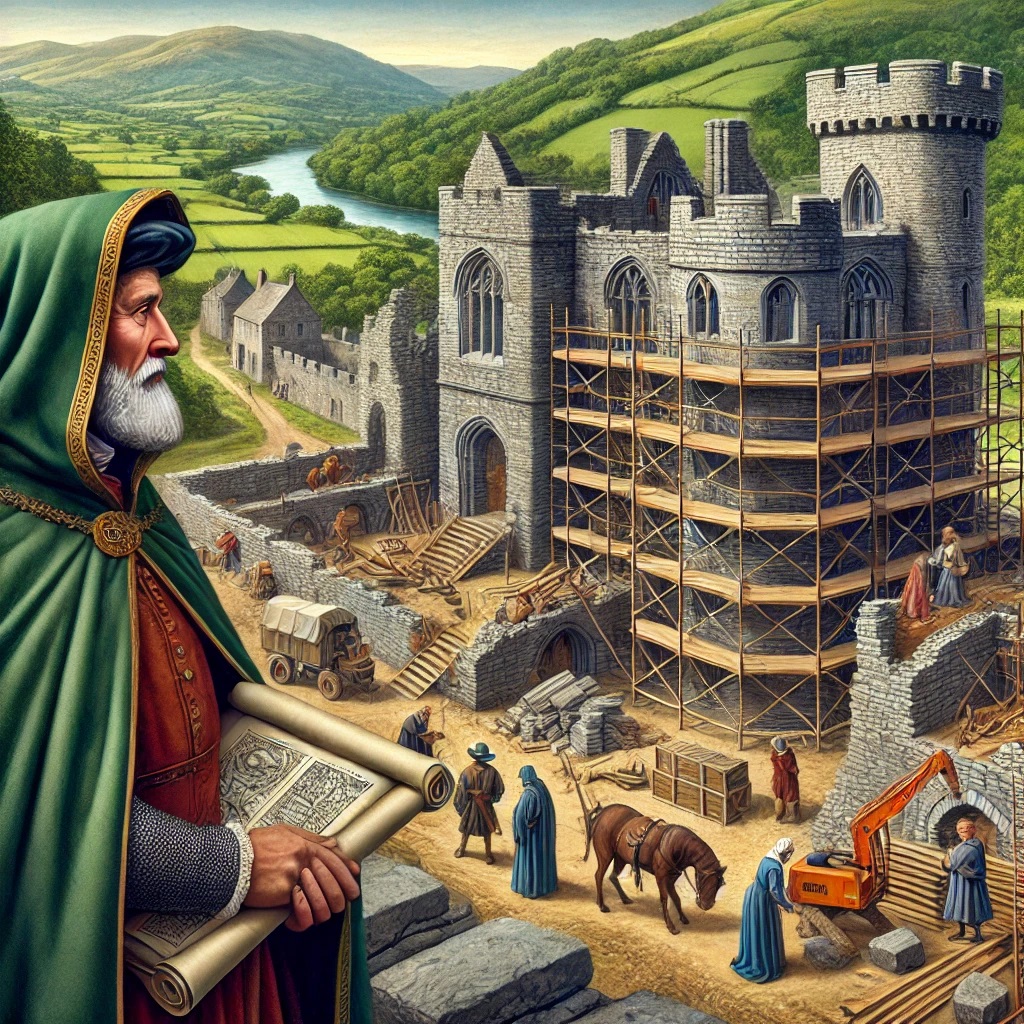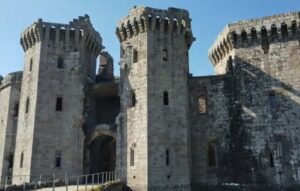When we think of the grand medieval castles of Wales, towering fortifications such as Conwy, Caernarfon, and Harlech come to mind. These enduring structures were not just built for defense; they were symbols of power, authority, and ingenuity. At the heart of their creation was a man whose vision and skill transformed the landscape of castle-building: Master James of St. George.
This blog delves into the life, works, and unique contributions of Master James, exploring how his genius shaped some of the most iconic castles in medieval Europe.
The Architect of Edward I’s Vision
Master James of St. George was born in Savoy, an area renowned for its military architects. His early career involved designing fortifications in the Alpine region, which honed his skills in adapting structures to challenging terrains. In the 1270s, he was brought to England by Edward I, who recognized his unparalleled expertise.
Edward’s ambition to subdue Wales required not just military might but also architectural brilliance. To cement English control, he commissioned an ambitious project: the “Iron Ring” of castles, a series of fortresses that would dominate North Wales.
Master James’s Greatest Works
Conwy Castle (1283–1287)
Built as part of Edward I’s campaign to conquer Wales, Conwy Castle is a masterpiece of military engineering. With its eight massive towers and commanding position over the Conwy Estuary, the castle was both a defensive stronghold and a symbol of English authority. Master James also designed the town walls, creating a fortified urban center that showcased his holistic approach to construction.
Caernarfon Castle (1283–1330)
Caernarfon Castle stands out for its ambitious design and imperial symbolism. Inspired by the walls of Constantinople, its banded stonework and polygonal towers project Edward I’s vision of dominance and sophistication. Master James’s ability to blend practicality with grandeur is evident in every detail, from the imposing gateways to the carefully planned layout.
Harlech Castle (1283–1290)
Perched atop a rocky outcrop, Harlech Castle epitomizes the strategic genius of Master James. Its “way to the sea,” a steep stairway leading to the shore, ensured the castle could be resupplied even during a siege. The compact but powerful design reflects his talent for maximizing defensive capabilities while adapting to challenging landscapes.
Beaumaris Castle (1295–Unfinished)
Although Beaumaris Castle was never completed, it is regarded as Master James’s crowning achievement. Designed as a concentric fortress, its symmetrical layout and double-wall system represented the pinnacle of medieval military architecture. Its unfinished state does little to diminish its reputation as one of the most advanced fortifications of its time.
Innovations and Unique Contributions
Master James of St. George’s work was groundbreaking, setting new standards for castle-building in Europe. His unique contributions include:
- Concentric Design: Layers of walls provided multiple lines of defense, with Beaumaris Castle exemplifying this approach.
- Integration with Natural Features: Sites like Harlech and Conwy used natural defenses, such as cliffs and estuaries, to bolster security.
- Urban Planning: The fortified towns surrounding Conwy and Caernarfon castles demonstrate his ability to integrate military and civilian needs.
- Aesthetic Symbolism: Beyond functionality, castles like Caernarfon incorporated imperial symbolism, reflecting Edward I’s aspirations.
- Water Defenses: Strategic use of moats and water ensured castles were difficult to besiege and easy to resupply.
Legacy and Impact
Between 1277 and 1304, Master James oversaw the construction of castles and town defenses that transformed the landscape of North Wales. His meticulous attention to detail, innovative designs, and ability to manage large-scale projects set him apart as one of the greatest military architects of the medieval era.
While his work primarily served Edward I’s political and military ambitions, the castles built by Master James have endured as cultural and historical treasures.
Conclusion
Master James of St. George’s genius shaped the castles that define Wales’s medieval heritage. His ability to combine practical engineering with artistic vision left a legacy that continues to inspire awe. From the concentric brilliance of Beaumaris. To the imperial grandeur of Caernarfon, his work stands as a testament to the power of human ingenuity and ambition.
As you explore the castles of Wales, take a moment to reflect on the mind behind their creation. A man whose vision has withstood the test of time.



